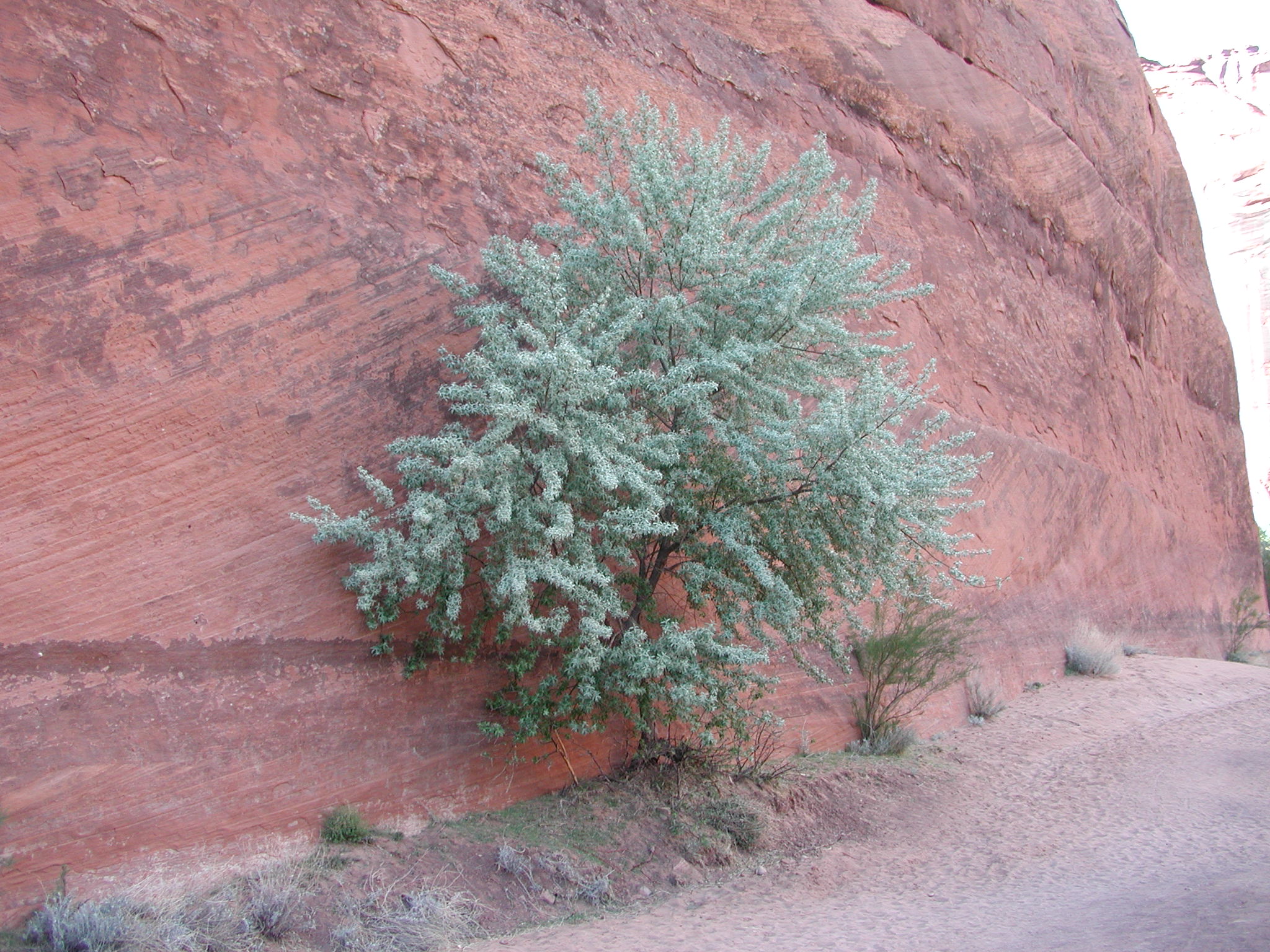Russian olive and other invasives
Contact
University of Arkansas System Division of Agriculture
Cooperative Extension Service
2301 S. University Ave.
Little Rock, AR 72204

Russian olive and other invasives
Traveling through the big open spaces of the western states I saw lots of Russian olives (Elaeagnus angustifolia) scattered across the landscape. Sometimes they were individual trees but more often they created a thicket of gray-leafed brush following the course of a stream or river. Their preferred habitat seemed to be the same kind of locations where cottonwoods grow, so they were absent from sites where pine and spruce flourish.
Like many invasive species found around the nation, Russian olive was first introduced as an ornamental in the late 1800s. It is a low-branched deciduous tree growing to about 30 feet tall with a broad-spreading crown. The twiggy branches are armed with 2-inch-long spiny spurs. Trunks can reach 2 feet in diameter and become fire-resistant as they age. The handsome gray leaves are an adaptation that both makes it attractive and tolerant of high summer temperatures. Because it thrived in harsh locations around the homesteads in the western states, it soon became a favorite for use as windbreaks and planting along streams for stabilizing the banks.
By the 1940s its propensity to escape was noticed but it has only been since the 1990s that alarm bells were sounded. The reasons for Russian olive’s success as a tree in the Western landscape are many. It grows well in both saline and alkaline soils, sites shunned by more finicky plants. It tolerates high summer temperatures and cold winters down to a negative 30 below. It can fix its own nitrogen. And, while moist soils are needed for germination, the tree can grow just fine in areas that get as little as 10 inches of rain each year. It is not much of a threat in eastern states because it seems to only be invasive in areas receiving between 10 and 30 inches of rainfall per annum.
The litany of damage done to the western ecosystems by this introduced species is long. It typically grows along rivers and streams and can form dense thickets. While Russian olive seedlings can survive shading, cottonwood and willow seedlings, the usual plants found in the riparian zone of western streams, can’t. They need sunlight to grow and establish. Big game, cattle and beavers don’t feed on Russian olive plants, so the diversity of wildlife suffers. Starlings, themselves an introduced species, and brown-headed cowbirds that lay their eggs in the nests of other bird species, eat the Russian olive fruit and thus the species diversity of birds declines.
Westerners are especially sensitive about their trout streams. One study showed that Russian olives – because of the bacterial association that allows them to fix nitrogen – add extra nutrition to the streams which allows more carp – another introduced species – to survive. Lots of additional carp eggs encourage bluegill and bass to flourish which compete with cutthroat trout.
Eradicating Russian olives is a big challenge because they are so well established over much of the inner Mountain West. Much of the land is public land and eradication would be a costly endeavor. They can be pushed out, but that disturbs the soil, only making the site more vulnerable to bird-dropped seeds or exposing still-viable buried seeds to the conditions required for germination. Herbicides can be used but that presents its own set of ecological challenges. Managing the spread of the species into new areas and controlling especially problematic stands are probably more realistic goals.
Some of my nature-loving friends probably consider me a fair-weather environmentalist because I have trouble getting overly worked up about invasive species. Sure, it would be nice if we could magically erase invasive species from the natural world. No more Russian olives, callery pears, kudzu, bush honeysuckle, Johnson grass, crabgrass, dandelions, honeybees, earthworms (yes, both introduced species), etc. But like King Midas with his magical touch, would that mean that we humans should also be removed? For it seems to me that we humans are the ultimate invasive species, the most disruptive of all, the destroyer of worlds.
